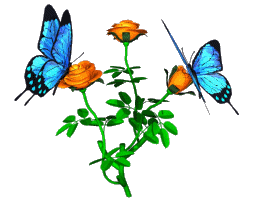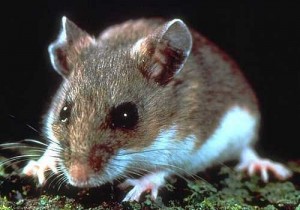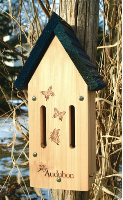- Bats & Butterflies, Bird Accessories, Butterfly Houses, Misters and Birdbath Drippers, Uncategorized
Add Food Near Butterfly Houses
They’ve earned the nickname “flying flowers” as the grace and beauty of butterflies in the garden is marvelous. If you enjoy seeing butterflies, there are steps you can take for maximum attraction next spring. Creating Habitat that butterflies find alluring is actually pretty simple. A great article on “How to Make a Butterfly Garden” from the University of Kentucky’s Entomology Department, can be found here: http://www.ca.uky.edu/ENTOMOLOGY/entfacts/ef006.asp Copy and paste this address in your browser’s address bar.
Food: Nectar is always an option, but butterflies adore over-ripe fruit. Oranges, bananas, melons, and grapes are just a few of the fruits the enjoy. Place fruit on a staked feeder dish, on the porch railing, or anywhere near the flower garden, raised where it may be seen. Be sure to remove if molded.
Water: Butterflies absolutely adore the gentle spray from Leaf Misters. You’ll see them flit back and forth through the fine mist daily once you’ve attracted them to your yard
Shelter: By providing butterfly houses, you’re offering shelter from both the elements and predators. Giving butterflies a sfe haven to rest helps attract them to your yard.
-
A Mouse Chewed Through the Butterfly House!
When writing these posts, it seems they end being about the backyard birding products I either use and/or sell on the site. I’m not sure why, because I can write about anything that suits me. So here’s a post on mouse who made my butterfly house his home…and it’s true too!
Living in the Atlanta, Georgia area for the past 25 years, 7 of them were spent in Peachtree City. It’s a really unique place, where the city is connected by golf cart paths, and most intersections have 4-way stops instead of traffic lights. There are special covenants for businesses, and no neon signs…imagine that? One common denominator of each home I ever lived in, was that wildlife habitat was always created, nurtured, and cared for everyday. It was, and still is part of my being.
Someone had given me a butterfly house because I thought they were cool and summer brought many of theses fabulous, flying flowers to my gardens. Placing the house on the ground was not the best idea, over time it started to rot at the bottom. While picking it up for inspection and probable removal one day, there was a tiny deer mouse inside. I guess he liked the environment and felt comfortable in his little house, he didn’t know it was supposed to be for butterflies! Needless to say, the house likely never saw any butterflies, but did provide habitat for other critters!
- Bats & Butterflies, Bird Accessories, Butterfly Houses, Misters and Birdbath Drippers, Uncategorized
Do They Really Use Butterfly Houses?
Do Butterflies Really Use Butterfly Houses?
Also called hibernation boxes, they make wonderful accents in any environment. Available in redwood and cedar, from basic to decorative designs, butterfly houses add a certain charm to any flower garden. But…you have to wonder, do butterflies really use them? I don’t have one in my own garden, so I can’t speak from experience here, but opinions do vary on the subject. Some say they will use them for protection from predators, and for roosting during inclement weather. Others will say not at all, and that a mud puddle is a nicer gesture for butterflies!
Of course flowers that produce nectar will always attract butterflies, and they just adore the gentle spray of leaf misters…this IS from experience! Several Butterfly Bushes, lots of Lantana, and Native Salvia, along with 2 leaf misters give us the daily pleasure of viewing these “flying flowers” daily during warmer months just north of Atlanta.
If you do opt for a butterfly house in your garden, the recommended height is about four feet above ground, and it’s best to have a southern exposure in the wintertime as well.



